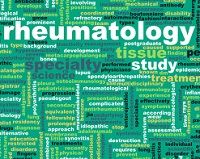Article
Behcet's Syndrome: A Puzzle with Many Pieces
Author(s):
Behcet's syndrome continues to puzzle rheumatologists.Several studies in 2014 and 2015 examined various aspects of this rare disorder.

Behcet's syndrome continues to puzzle rheumatologists. A rare disorder, its more common symptoms include mouth and genital sores, and inflammation of blood vessels and the eyes. Several studies in 2014 and 2015 examined various aspects of Behcet’s syndrome, and Gulen Hatemi, MD, of the Division of Rheumatology in the Department of Internal Medicine, at Istanbul University in Turkey, and colleagues summarized the new findings in a paper published in Clinical and Experimental Rheumatology recently.
Diagnosing Behcet’s syndrome (BS) is difficult “since there are no pathonomonic signs, or specific laboratory, radiologic or histologic findings for BS.” It is similar to a number of other rheumatologic conditions, and one review published in 2014 focused on the “development and use of criteria sets for BS.”
“The differences between geographies regarding the clinical manifestations of BS continue to be puzzling for researchers,” according to the review. The occurrence of BS declines moving south to north, and the condition is rare in Sub-Saharan Africa.
One study challenged the long-held idea that people who experience the onset of BS at a young age are more likely to have a “more severe disease and major organ involvement,” but the results were inconclusive.
Young men are more likely to develop major organ involvement. Gender plays a role, as well. Men tend to have a “more severe disease course with a higher frequency of major organ involvement and higher mortality rates.”
The researchers examined links between uveitis and found that “the frequency of BS as the course of uveitis among all uveitis cases, is somewhat parallel to the general BS prevalence in that country.”
Just as the criteria for diagnosing BS are still being developed, so are outcome measures. The review revealed that two new outcome measures were published in the last year. One, “an electronic medical report based disease activity index,” was tested on 73 Korean BS patients with good results. The other, “a patient reported mucocutaneous activity index” needs further elaboration and testing.
Other studies investigated immunopathogenesis and genetics related to BS. Clinical manifestations, including eye disease, vascular involvement, neurological disease, and renal involvement were studied in the past year, as well. Various drugs were tested with mixed results and more therapies should be developed.





